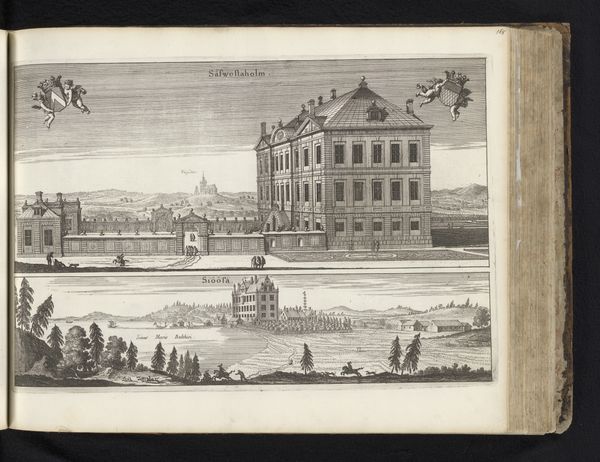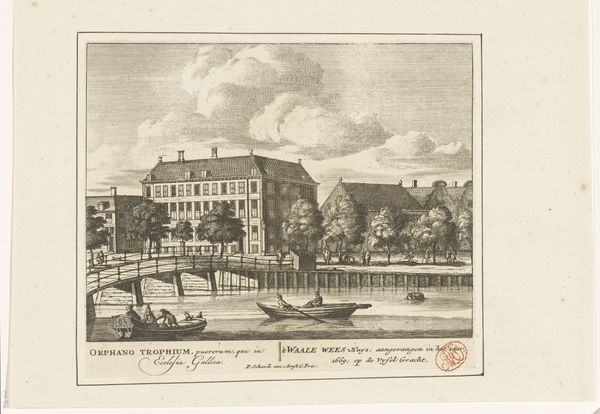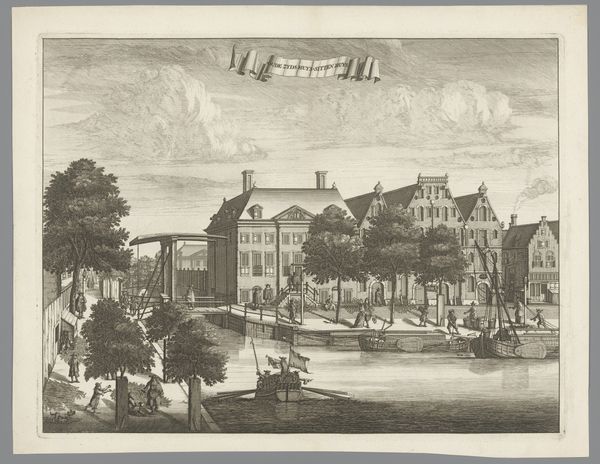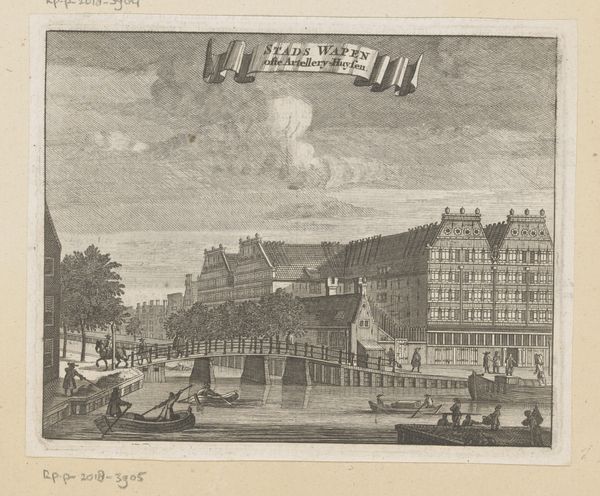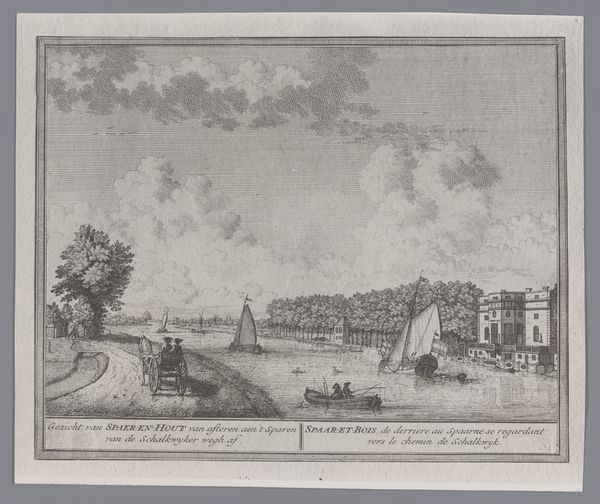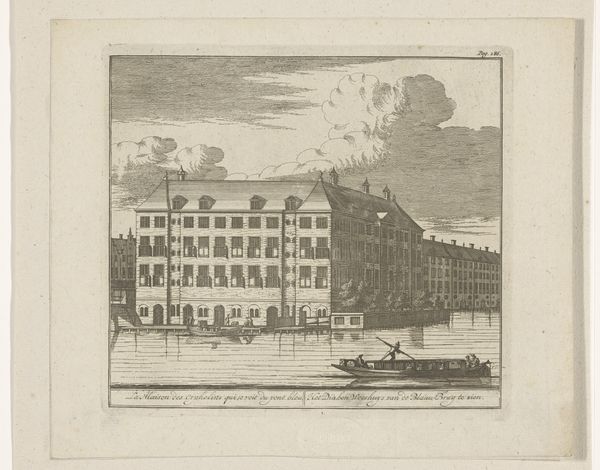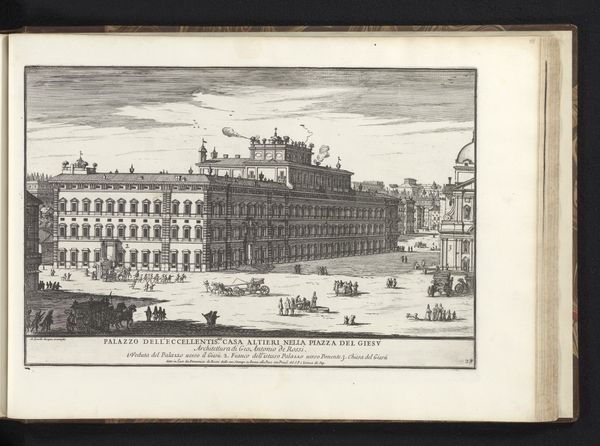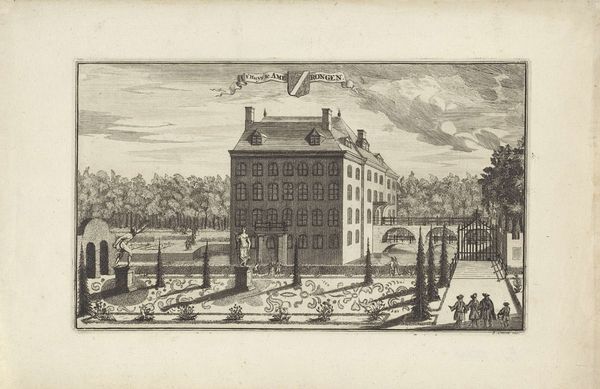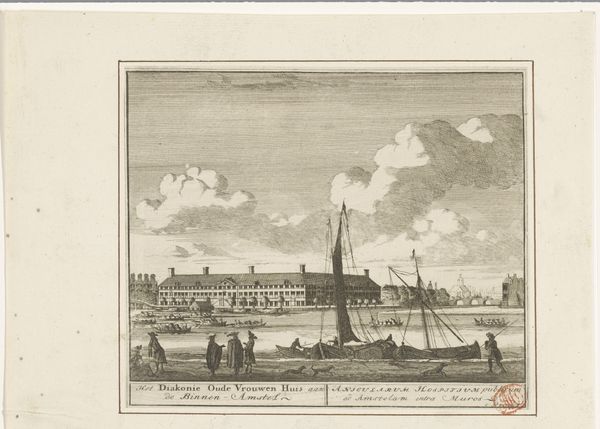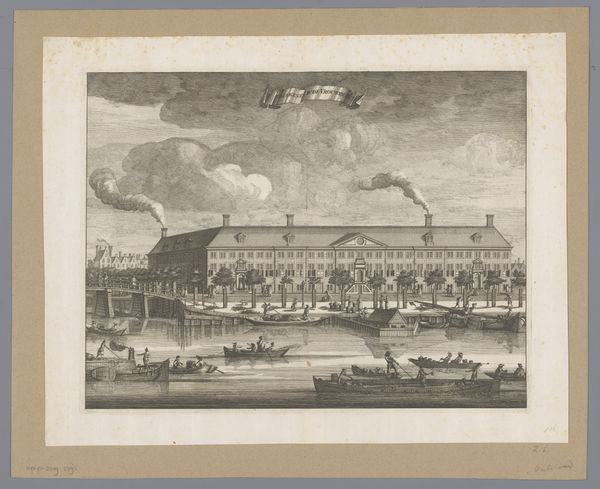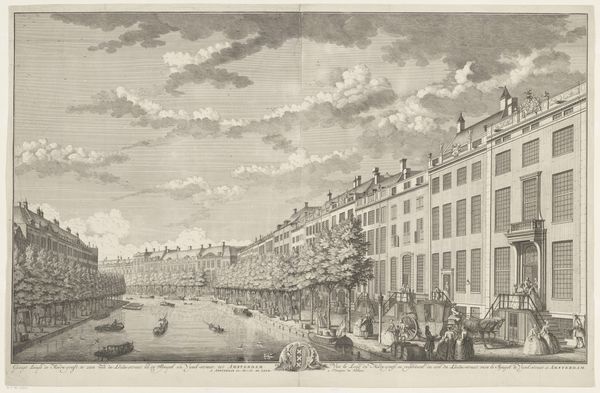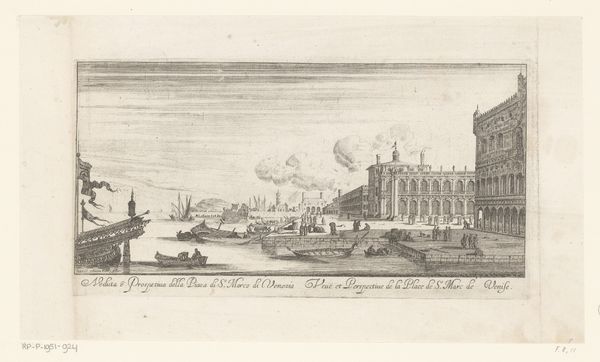
print, etching
#
dutch-golden-age
# print
#
etching
#
landscape
#
cityscape
#
watercolor
Dimensions: height 269 mm, width 352 mm
Copyright: Rijks Museum: Open Domain
Curator: This is an etching entitled "Gezicht op het Diaconieweeshuis in Amsterdam," dating back to 1693 by an anonymous artist. It offers a detailed view of the Diaconieweeshuis, a prominent orphanage in Amsterdam. Editor: It's strikingly calm, almost deceptively so. The delicate etching work creates a sense of order and civility, yet there's something about the subject matter, an orphanage, that suggests a complex, potentially unsettling undercurrent. Curator: Absolutely. Orphanages during this period represent a complex social reality, addressing the issues of poverty, abandonment, and social welfare within the burgeoning urban landscape of the Dutch Golden Age. This image highlights the institutional response to these issues. Editor: And the visual choices reflect that. The orphanage itself dominates the composition, presented as an imposing, almost fortress-like structure. Considering how the public face of charity shapes social narratives, is the sheer size suggestive of social control as much as care? Curator: That's a key point. Dutch art was often commissioned to project societal values and order. By depicting the orphanage so prominently and meticulously, the print serves to underscore the city’s commitment to caring for its vulnerable populations, even if that care was delivered within a highly structured and controlled environment. Editor: I find the detail incredibly telling – the tiny figures crossing the bridge, the boats on the canal, smoke rising. But consider who isn’t seen – the orphans themselves. The focus is on the facade and external activity, erasing the experiences within. This resonates deeply when examining the institution's influence on marginalized communities and its role in perpetuating power dynamics. Curator: Precisely. These cityscapes often function as a form of social documentation, but what they choose to include, and perhaps more importantly, exclude, speaks volumes about the intended message and the socio-political context in which they were created and consumed. We see this again in similar depictions across 17th-century Holland. Editor: Looking closer, that small detail of the sign adds another layer, a promotional aesthetic. This etching acts almost like an institutional advertisement aimed to reassure Amsterdam society, hiding darker truths through careful aesthetic staging and what is shown—and more importantly—omitted. Curator: The print certainly invites us to question what remains unseen or unsaid. It urges us to recognize the socio-political dimensions of the orphanage, beyond surface level charitable care, a lens applicable in studying systems today. Editor: It leaves me pondering the ethics of representation and institutional narratives. Art and society are always interconnected; a piece can invite a wider critique of charitable systems.
Comments
No comments
Be the first to comment and join the conversation on the ultimate creative platform.
